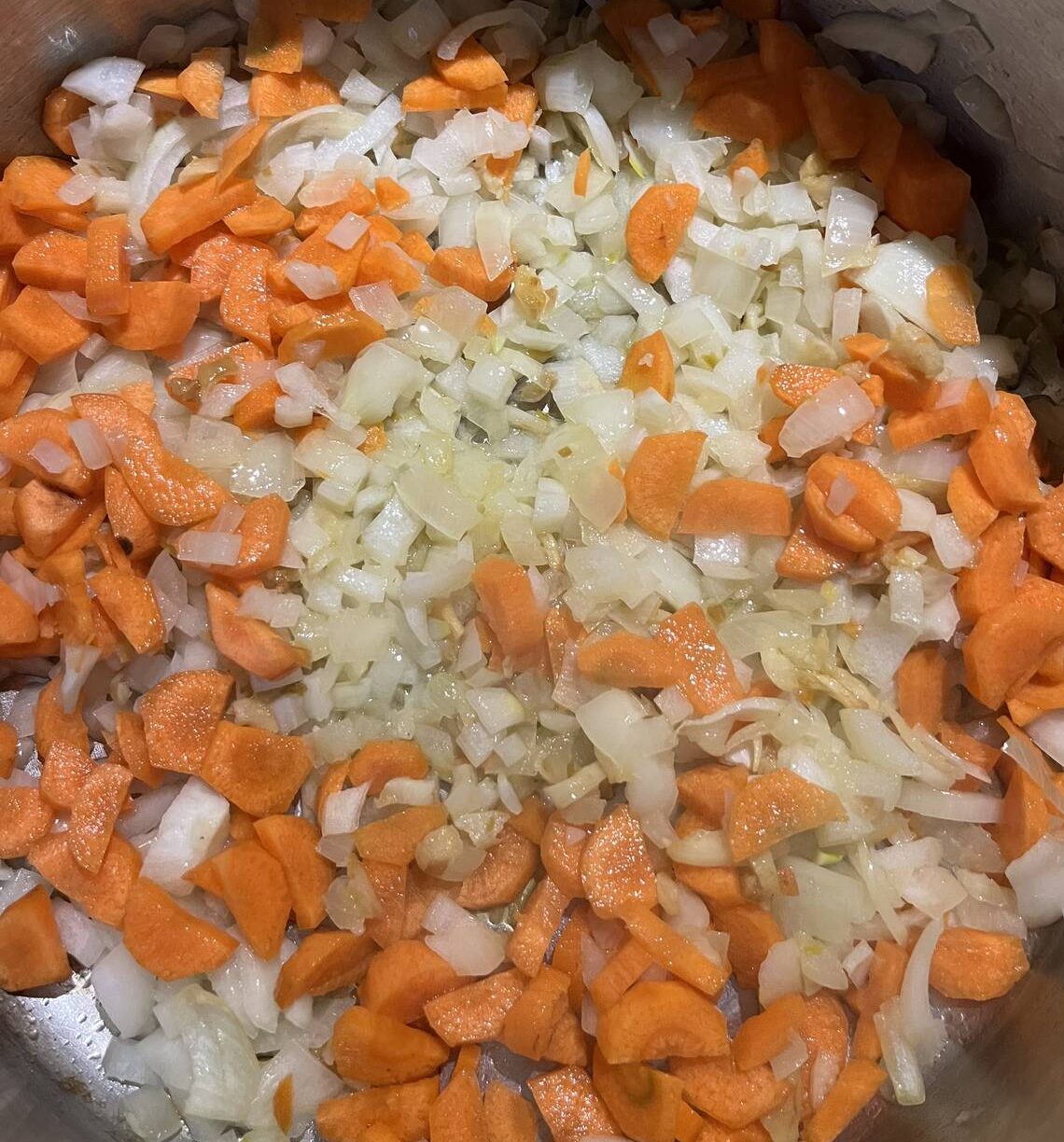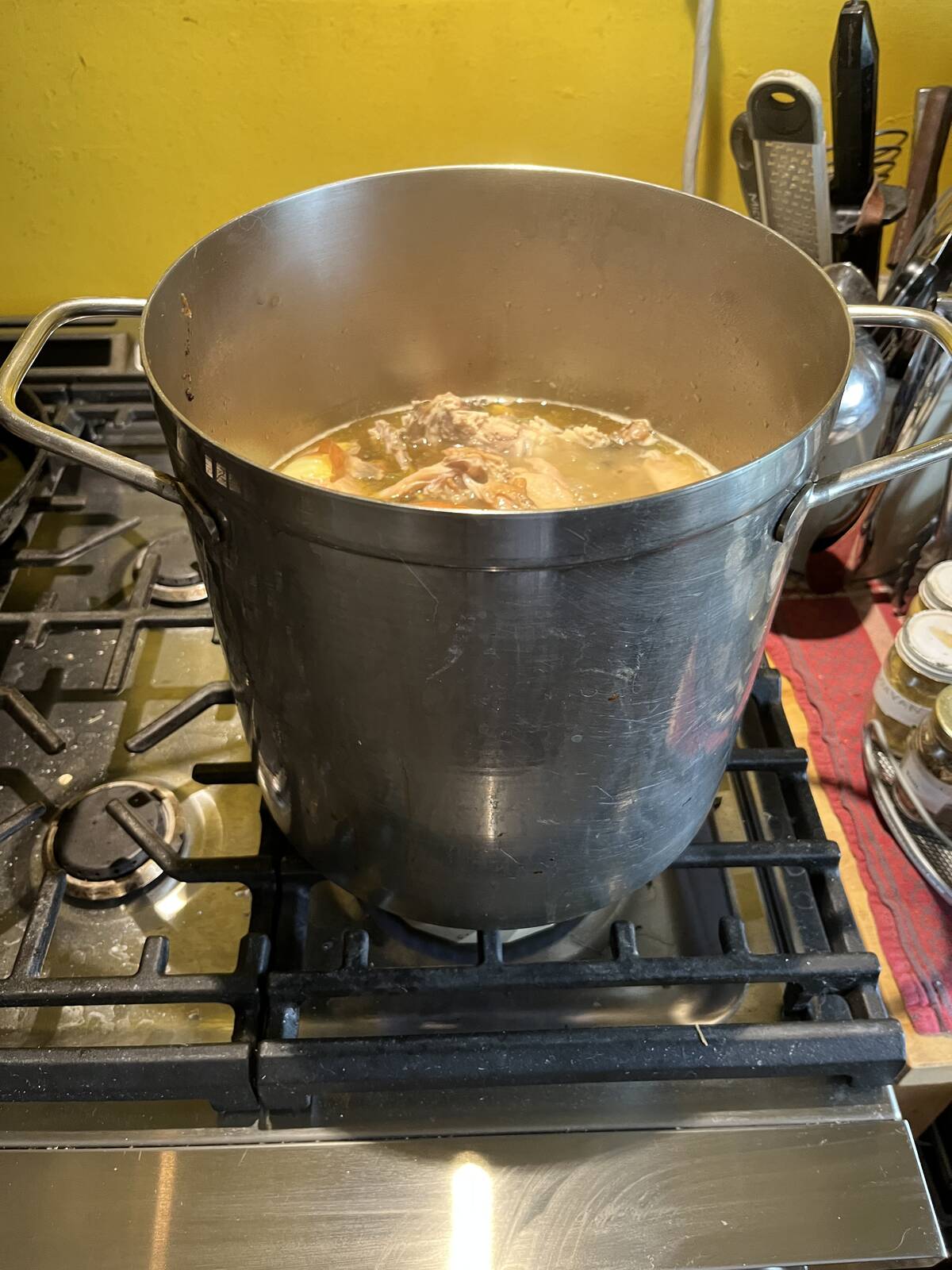“That smells good,” a voice says from the depths of a reclining chair, where my friend has taken refuge as she awaits cancer surgery. “That” is nothing but garlic and onions in olive oil, and the words are the same as my husband utters every time I turn on the stove and cook those simple ingredients. This particular batch of onions and garlic cloves is destined for the stockpot, to simmer with chicken bones until they become stock — the foundation of many restorative dishes — for soup I will feed my friend as she recovers post-surgery.
Onions and garlic offer more than good smells. In Cancer Letters (vol. 269, issue 2), scientists Anna A. Powolny and Shivendra Singh from the United States discuss research findings that show allium vegetables such as onions and garlic are effective in cancer prevention and treatment and “can not only offer protection against chemically induced cancer in animal models by altering carcinogen metabolism, but also suppressing growth of cancer cells in culture and in vivo by causing cell cycle arrest.”
In folk medicine that recognizes the healing value of food, this is old news. Garlic is widely acknowledged as antibacterial, anti-fungal and anti-thrombotic (preventing blood clotting). Much of the value in onions derives from its high sulphur content; that which makes us cry, though, is also responsible for alliums’ healthful properties.
Read Also

Gentle treatments for pain in the neck
Heading toward year-end, people unknowingly tense up against the cold and busyness, causing neck pain that can often be treated with appropriate support and gentle mobility, athletic therapist Kathlyn Hossack says.

So into the stockpot go the onions and garlic. Next are the bones — in my kitchen, chicken bones from the free-range birds I buy annually from my farmer friend. With some carrots, spices and herbs, this combo simmers in water for hours, releasing gelatin and nutrients from the vegetables and the bones. When it’s cooled, strained and chilled, the stock should go thick and goopy, revealing the presence of gelatin.
Meat-based stock — bone broth, as some call it — has been indispensable as a nutrient for millennia, especially in times and places where animal protein is in short supply. The collagen released from the bones during long simmering converts into gelatin, which facilitates digestion and may promote reduction of inflammation. So what seems like a simple combination of unprepossessing ingredients is actually highly nutritious, and I plan on taking regular doses of stock-based homemade soups to my friend in the hospital as she recuperates. First we eat, and feed our friends in need, then we talk about hospital fare.

Chicken stock
I collect chicken bones, raw and/or roasted, in my freezer, and make stock as needed. If you don’t have bones, find an old stewing hen, or gallina, as Italian nonnas call them. Failing either, buy backs and bones, or a whole bird.
Roasting the bones, onions and garlic engages the Maillard reaction of browned and caramelized surfaces for better colour and aroma and possibly more accessible enzymes. If you are making a smallish potful of stock and don’t want to use the oven to roast bones or vegetables, use your air fryer or a cast iron pan on the stovetop to generate good colour and flavour.
Recuperative soup is a “mother” in the French culinary sense. It can be as simple as stock with additional minced garlic, onions and carrots, or it can evolve into any number of equally simple soup variants, such as the best-ever chicken noodle, or French onion. Or add potatoes, carrots, yams or celery root, and puree when cooked for a thick texture; add pasta, tomatoes and minced sausage for minestrone; add lentils or dried beans or chickpeas with or without a ham hock for split pea/lentil/bean soup; add corn and ham for chowder; or add beef and barley for that favourite classic. In short, add ingredients ad infinitum.
The addition of a bit of apple cider vinegar helps with the release of gelatin from the bones. Do not salt the stock as if simmers; if you reduce it for a sauce, it may become too salty.
Makes 4 quarts.
- 5 lb. chicken bones
- 1-2 medium onions, halved
- 1 head garlic, split crosswise
- 3 large carrots, coarsely chopped
- 2 stalks celery, chopped
- 1 Tbsp. apple cider vinegar
- A handful of parsley stalks
- A handful of basil stalks
- A sprig of rosemary
- A handful of fresh thyme
- 12-15 whole peppercorns
- Water to cover
Brown the bones, onions and garlic as described in the headnote. Combine in stockpot with remaining ingredients. Cover with cold water and bring to a boil, then reduce to an active simmer so it actively bubbles over half the surface. Cook for four to 12 hours, replenishing water whenever it drops below the top surface.
Cool and strain, then ladle into containers. Chill, remove coagulated fat cap and freeze the stock until needed.
















